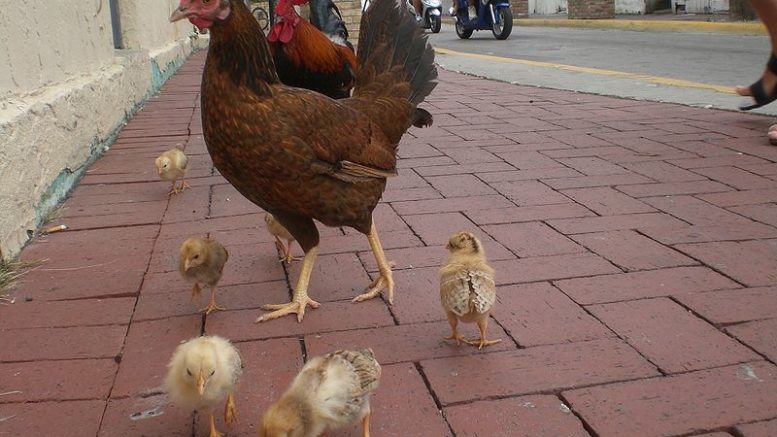I refer to the article “Free-roaming chickens culled due to health and safety concerns, not noise: AVA” (Today, Feb 14).
It states that “Following the debate over the recent culling of free-roaming chickens at Sin Ming, the director-general of the Agri-Food and Veterinary Authority (AVA), Dr Yap Him Hoo, said the birds were put down due to concerns over public health and safety and not because of complaints over noise.”The risk of free-roaming chickens in Singapore being exposed to bird flu is real and significant, as we are a stopover node for migratory wild birds,” wrote Dr Yap in a letter published by the TODAY newspaper on Monday (Feb 13).
AVA had earlier said it culled 24 chickens in the Sin Ming area after getting about 20 complaints from residents last year, largely about noise.
Dr Yap stated: “The noise issuesonly serve to bring attention to the relatively high numbers of free-roaming chickens in certain areas, which in turn raise the risk of exposure to bird flu in these localities.”
His letter is reproduced below:
We thank all Voices writers who shared their views on the management of free-roaming chickens and take this opportunity to clarify the Agri-Food and Veterinary Authority position.
One of the AVA’s responsibilities is to ensure that Singapore is kept free from associated animal and plant diseases that pose a threat to public health.
In this regard, the AVA must do surveillance work to detect and control diseases well before they can potentially spread to Singapore.
There is clear scientific evidence that chickens are very susceptible to the bird flu virus and can in turn transmit the disease to humans.
This was what happened when bird flu struck the region in 2004.
That is also why the World Organisation for Animal Health (OIE) and the Food and Agriculture Organization, in a joint statement in 2004 about battling bird flu, mentioned the need to manage free-range chickens:
To control bird flu at source. Keeping poultry in a bio-secured environment is one of the OIE’s recommended measures to prevent bird flu incursion.
The risk of free-roaming chickens in Singapore being exposed to bird flu is real and significant, as we are a stopover node for migratory wild birds.
This means that chickens on our island can catch the disease through direct contact with wild birds or even through their droppings.
In a recent bird flu outbreak in Denmark, investigations found that it started because of contact between wild birds and free-roaming chickens.
There have also been cases of outbreaks around the world where the primary risk factor for human infection was linked to direct or indirect exposure to infected poultry.
For example, in recent months, there had been reports of human infections in China and Vietnam owing to close proximity to infected chickens, such as in live poultry markets or during preparation of meals using free-roaming chickens.
Various media reports may have given the impression that the AVA is taking action solely because of complaints about noise.But that is not the case.
Our concern is not about noise but about public health and safety.
The noise issues only serve to bring attention to the relatively high numbers of free-roaming chickens in certain areas, which in turn raise the risk of exposure to bird flu in these localities.
We recognise the views expressed by different stakeholders and will continue exploring various options to manage the free-roaming chicken population.
We are also continuing our studies of the risks of a bird flu outbreak in Singapore, to better understand how the disease may start and spread through free-roaming chickens here, and what measures are needed to reduce public health risks.
We seek the understanding of all Singaporeans as we go about doing this work to keep our nation and our people safe.”*
So, why did it take so long to tell us the reason?
So, why was the “wrong” reason given in the first place?
So, why did it take so many years to take what I understand may be the first ever chicken culling exercise, since the WHO issued it’s advisory in 2004?
Leong Sze Hian
